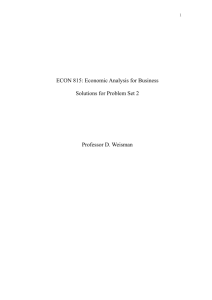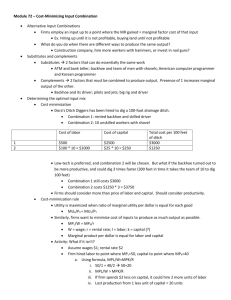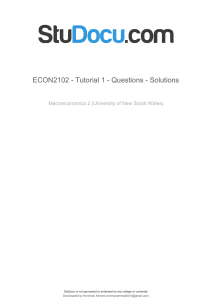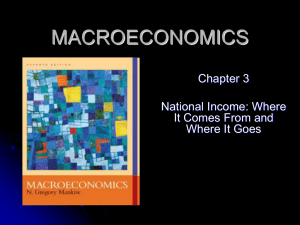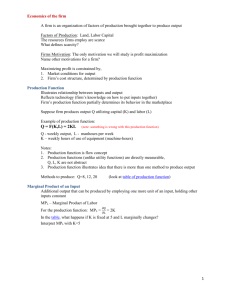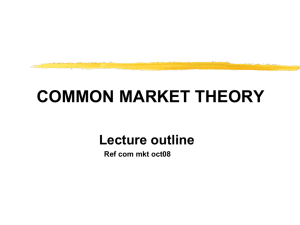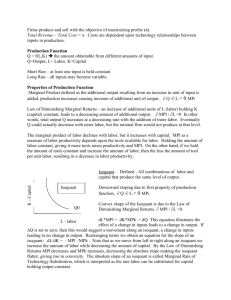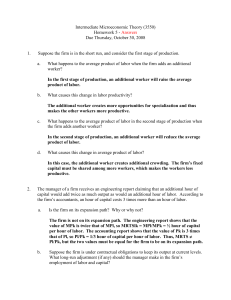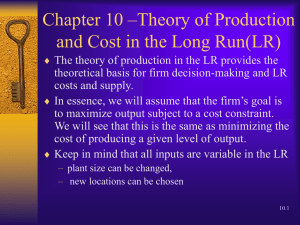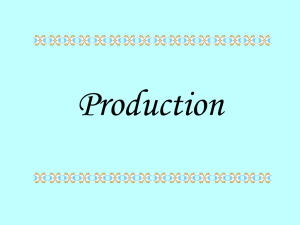Solutions Problem Set 3
advertisement
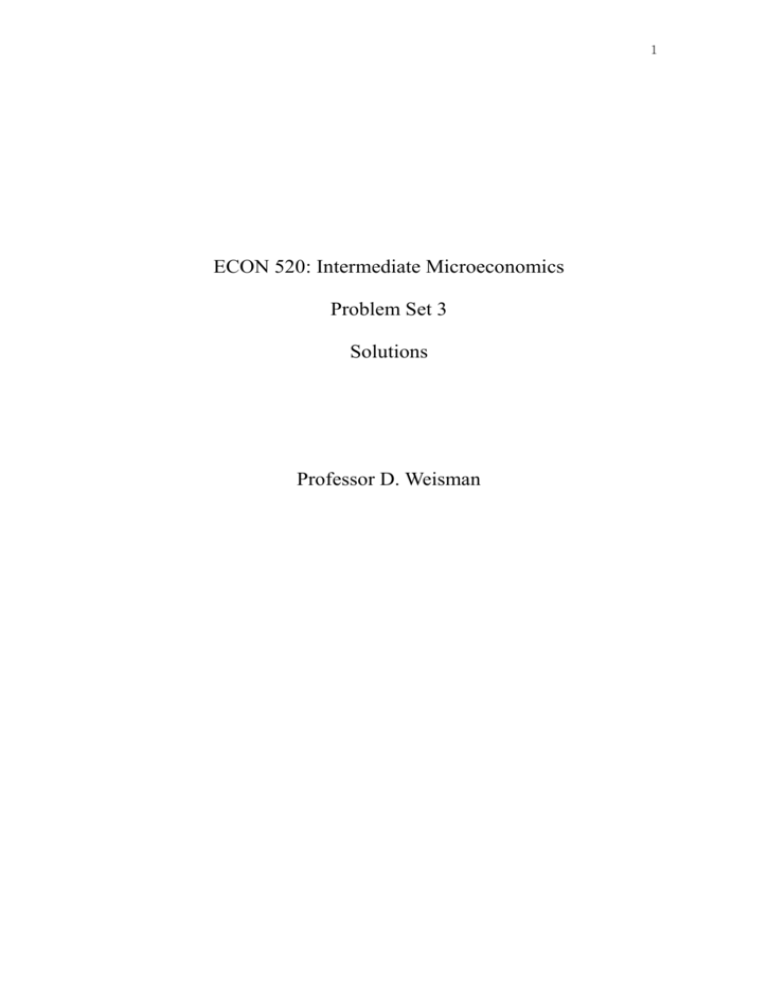
1 ECON 520: Intermediate Microeconomics Problem Set 3 Solutions Professor D. Weisman 2 1. Q KL with 2 and w 1 . [Note: MPK L and MPL K ] a) 32 units of output are to be produced. Hence, (1) 32 KL Also, the firm’s equilibrium condition is given by; (2) MPK MPL L K L 2K r w 2 1 Hence solve the following equations simultaneously: (3) 32 KL 2 32 K 2 K 2 K (4) L 2 K Hence, b) k * 4, L* 8 a) minimum cost : C (32) 4(2) 8(1) 16 c) K Iso-cost equation: 16=wL+rK, or 8 K=(16/r) – (w/r)*L K= 8-(1/2)L 4 Q=32 8 16 2. Let the production function be given by Q 2 K L , with L r 3 and w 1 . Observations: (1) The production function is perfect substitutes (2) Capital is 2times more productive than labor per unit, but capital is 3 times the cost of labor per unit. Hence, conjecture that use only labor in production. In terms of the firm’s equilibrium condition 1) MPK 2, MPL 1 and MPK MPL 2 1. since r w 3 Hence, the marginal product per dollar of labor everywhere exceeds the marginal product per dollar of capital. Hence, we have a corner solution in which only labor is used in production. To produce 10 units of output using only labor (K=0) requires 10 units of labor. 3 K * 0, L* 10, Q L a) minimum cost : C (10) 10 1 10 b) Iso-cost line: C wL rK , C 1L 3K , solve for K with C=10, K 10 1 L 3 3 Note 1: slope of iso-cost line slope of isoquant 1 . 3 1 . 2 Note 2: Whenever slope of isoquant slope of iso-cost line, optimal input combination will entail a corner solution (i.e., use only labor or only capital in production) K 5 Linear Isoquant Corner solution -1/2 10/3 -1/3 Q=10 Iso-cost line L 10 3. Let the production function be given by Q min 2K , L with r 2 and w 1 . Observations: (1) The production function is perfect complements. (2) Efficient production requires operation at the vertex points o the isoquants, or where there is neither 2K L or K excess capital nor excess labor. This implies that 1 L. 2 Hence, each unit of output requires 1/2 unit of capital and 1 unit of labor in efficient production. a) The total cost of producing 20 units of output is 1 2 (1) C (20) 20 r 1w 20 1 1 40 b) Each unit of efficient production requires 1/2 unit of capital and 1 unit of labor. Hence, to produce 20 4 units of output efficiently requires Note: K * 10, L* 20 . Q min 2 K , L min 20, 20 20 terms are equal C wL rK with C 40, r 2 and w 1 . c) The iso-cost line is given by 40 L 2 K , or K 20 1 L. 2 K L-Shaped isoquant Expansion path 20 10 Q=20 1/2 -1/2 20 40 L Supplemental question 4. Derive the cost functions associated with the production functions in questions 2 and 3? a) Q 2 K L with r 3 and w 1 . MPK 2 MPL 1 use only L in production. r 3 w Each unit of output requires 1 unit of labor, which implies that (1) C (Q) w Q 1 Q . Note C (10) 110 10 (Same answer as in 2a) b) Q min 2K , L with r 2 and w 1 . Each unit of output requires 1 K and 1L . This implies that the cost function is given by 2 1 1 2 11 Q 2 2 (2’) C (Q ) 2Q . Note C (20) 2 20 40 (Same answers as in 3a). (2) C (Q) r 1w Q

